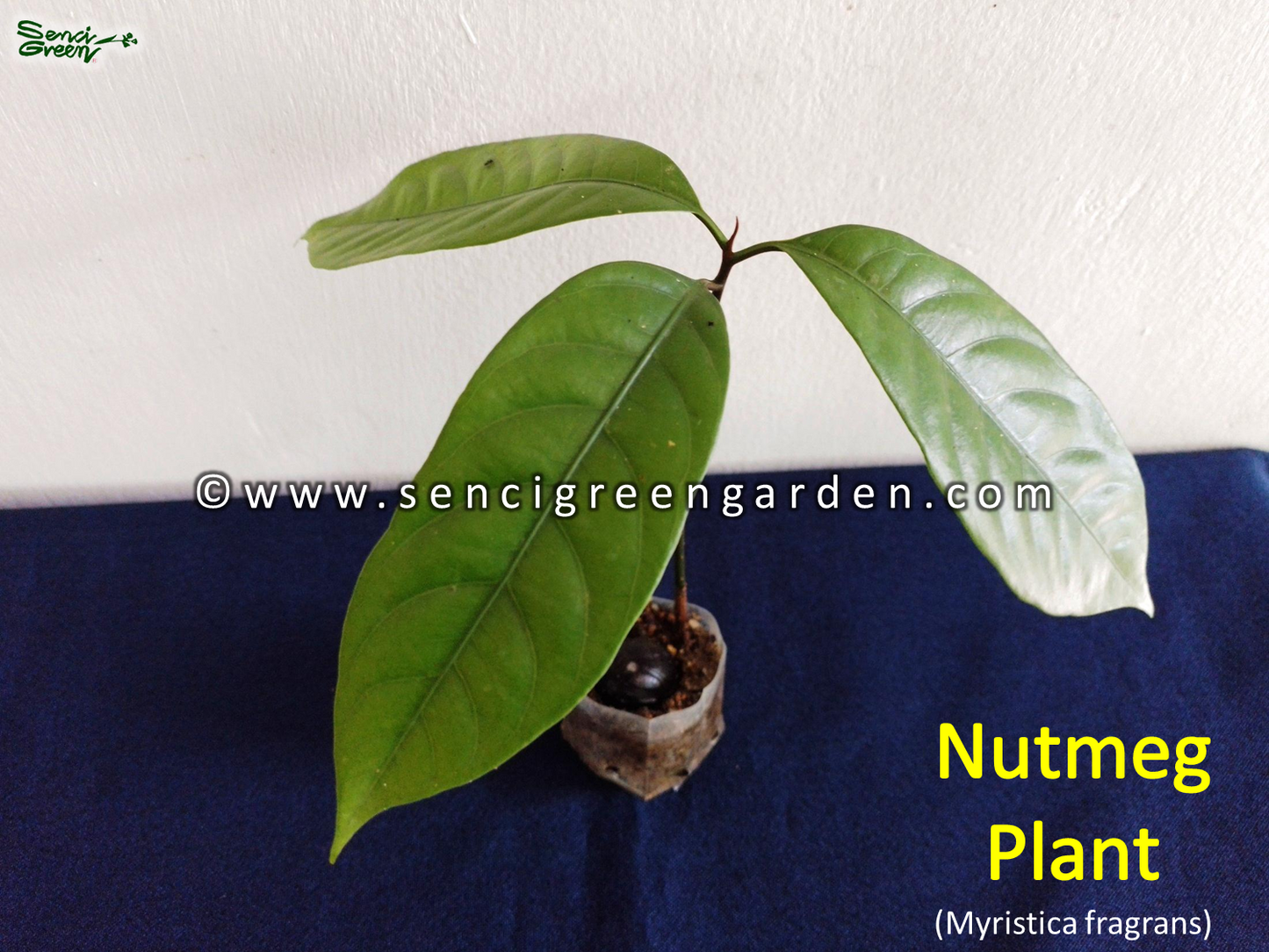Senci Green Garden
Nutmeg Plant (Myristica fragrans) spice organic rare 6" - 8" Inches
Nutmeg Plant (Myristica fragrans) spice organic rare 6" - 8" Inches
Couldn't load pickup availability
Nutmeg Plant (Myristica fragrans)
Plant Size : 6" - 8" Inches
The Nutmeg plant, scientifically known as Myristica fragrans, is an aromatic evergreen tree native to the tropical rainforests of Southeast Asia, particularly Indonesia. It belongs to the Myristicaceae family and is renowned for its seeds, which are the source of two valuable spices: nutmeg and mace.
Physical Description
Tree Structure: The Nutmeg tree typically grows to a height of about 10-20 meters (30-65 feet) and has dense foliage with glossy, dark green leaves that are oval or oblong in shape.
Flowers: The tree produces small, pale yellow flowers that are fragrant and clustered.
Fruit: The fruit of the Nutmeg tree is a yellowish-green drupe, similar in appearance to an apricot. When mature, it splits into two parts, revealing a bright red aril (the mace) surrounding a brown seed (the nutmeg).
Cultivation
Climate: Nutmeg trees thrive in tropical climates with high humidity and well-distributed rainfall. They are sensitive to cold temperatures and require shade when young.
Propagation: They are propagated through seeds, which germinate within 2-6 weeks after planting.
Culinary and Medicinal Uses
Nutmeg: The seed itself, nutmeg, is ground into a spice used in both sweet and savory dishes, imparting a warm, nutty flavor. It is also used in baking, desserts, and beverages like eggnog.
Mace: The aril (mace) surrounding the seed is also dried and used as a spice, providing a slightly sweeter and more delicate flavor than nutmeg. It is often used in baked goods, sauces, and soups.
Medicinal Purposes: Traditionally, nutmeg has been used in various cultures for its medicinal properties, including as a digestive aid, to relieve pain, and even as a hallucinogen in large doses (although this is not recommended due to potential toxic effects).
Cultural Significance
Historical Trade: Nutmeg has a long history of being traded as a highly prized spice, particularly in Europe during the Middle Ages and Renaissance periods. Its rarity and value led to it being dubbed "black gold" during these times.
Symbolism: In some cultures, nutmeg has symbolic significance, representing prosperity, abundance, and even luck.
Conclusion
The Nutmeg plant, with its aromatic seeds and historical significance, remains an important cultural and culinary staple in various parts of the world. Its cultivation requires specific tropical conditions, and its fruits yield two distinct and valuable spices that have been cherished for centuries.
Share










